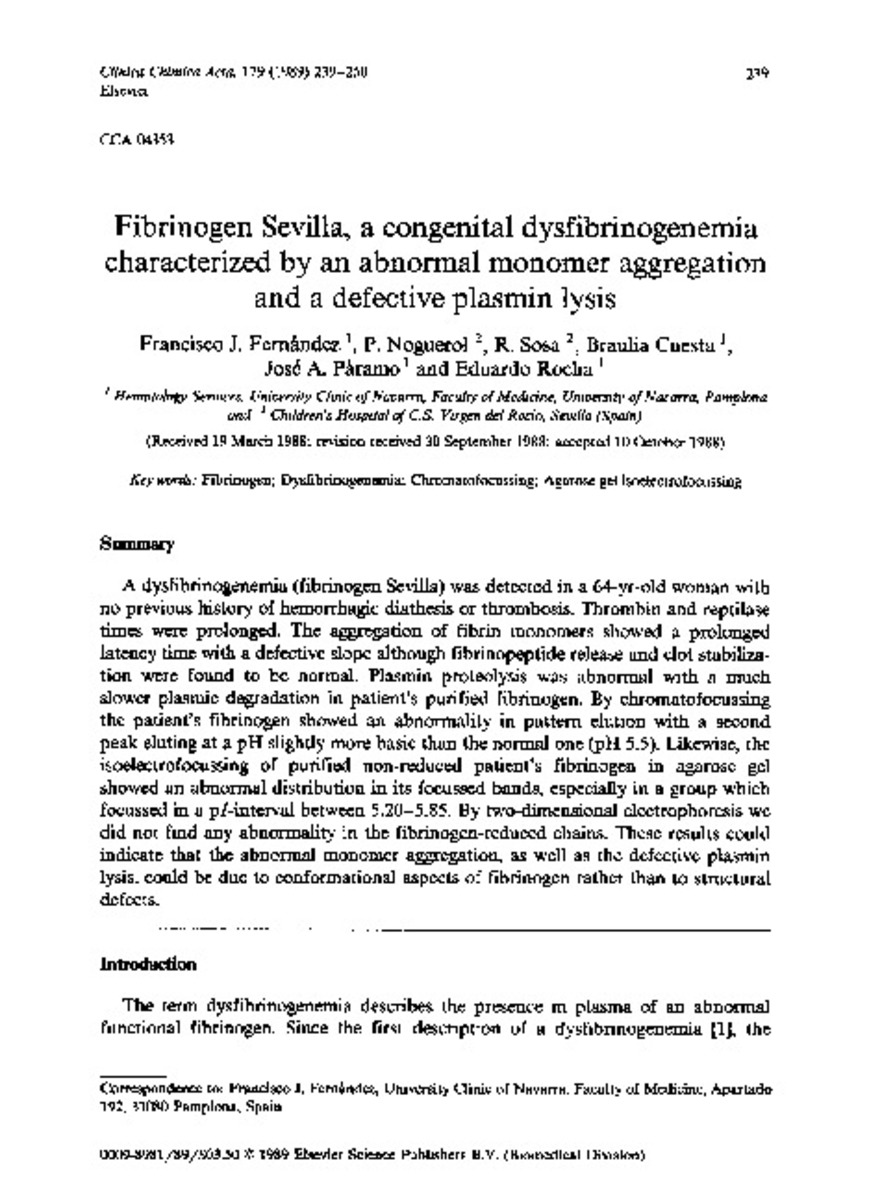Fibrinogen Sevilla, a congenital dysfibrinogenemia characterized by an abnormal monomer aggregation and a defective plasmin lysis
Keywords:
Fibrinogen
Dysfibrinogenemia
Chromatofocussing
Agarose gel isoelectrofocussing
Citation:
Fernandez FJ, Noguerol P, Sosa R, Cuesta B, Paramo JA, Rocha E. Fibrinogen Sevilla, a congenital dysfibrinogenemia characterized by an abnormal monomer aggregation and a defective plasmin lysis. Clin Chim Acta 1989 Feb 22;179(3):239-250.
Statistics and impact
0 citas en

0 citas en

Items in Dadun are protected by copyright, with all rights reserved, unless otherwise indicated.







